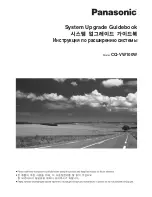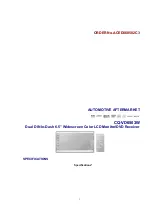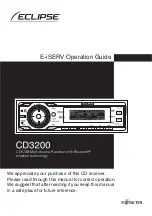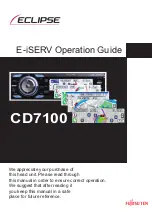
R5
SUPREME - Navigation System MkII
INSTALLATION
7000 118-383, B1
Page 25
Antenna Location
Mount the MGA-3 or MGL-5 antenna at a location with a clear, unobstructed view of the sky.
For best beacon reception performance, mount the MGL-5 antenna so that the centre of the
antenna is at least 8 cm (3 in) above any metal surface.
Local noise generated by your vessel or surroundings may affect your navigation system
performance. To minimize this impact, you should locate the antenna outside the path of any
radar beam, away from any transmitting antennas, and away from any other sources of
interference such as motors, solenoids and other electronics. Failure to avoid high energy
transmitting sources may result in permanent damage to the navigation system.
Do not, however, mount the antenna in the top of a mast or tower, as this may degrade the
COG and SOG readings.
The MGA-3 and MGL-5 uses a 1-14-UNS thread for mounting. Mount the antenna on a
standard US 1” 14 thread pipe or other standard antenna mount (not included).
Note: Antennas threaded onto a mount should be tightened only by hand.
Do
not
tighten the antenna by turning on the antenna cover, instead hold the mounting shaft located
at the bottom of the antenna and tighten by hand. Do not thread the pipe deeper than ¾ into
the antenna. Do not use tools to install the antenna on the pipe as this may cause damage.
Damage caused by over tightening is not covered by warranty.
Note: Once the system has been correctly mounted and connected, it is possible to monitor
the R5 Navigation Sensor
’s performance via the graphical web interface or the R5 SUPREME
CDU. This information can be used to locate the optimum placement of the antenna. This is
further described in section 8.3.3.
Cabling
The maximum allowable cable loss is 18 dB for the MGA-3 and MGL-5 antennas. The
maximum cable length depends on the attenuation of the cable and the chosen antenna.
Double shielded coaxial cable is recommended. The coaxial cable should be routed directly
between the antenna and the R5 Navigation Sensor in order to reduce electromagnetic
interference effects. The cable should not be installed close to high-power lines, such as
radar or radio-transmitter lines or any AIS VHF antenna cable. A separation of one meter or
more is recommended to avoid interference due to RF-coupling. Crossing of antenna cables
should be done at 90 degrees to minimize magnetic field coupling.
The table below gives recommendation on cables that can be used for the GNSS-antenna
connections. Due t
o the high frequency it’s important that the attenuation in the cable is low
for the specific frequency (1.5 GHz).
Type
Attenuation @ 1.5
GHz (dB/m)
(mm)
Weight (kg/100m)
RG 58
0.9
5
3.7
RG 400
0.6
4.95
6.3
RG 223
0.6
5.40
5.5
RG 214
0.35
10.8
18.5
RG 225
0.3
10.9
23.3
















































